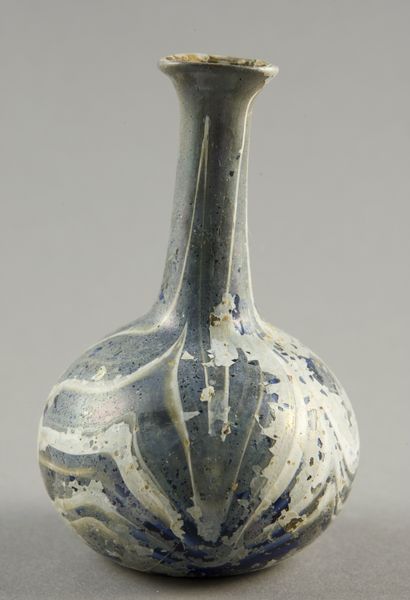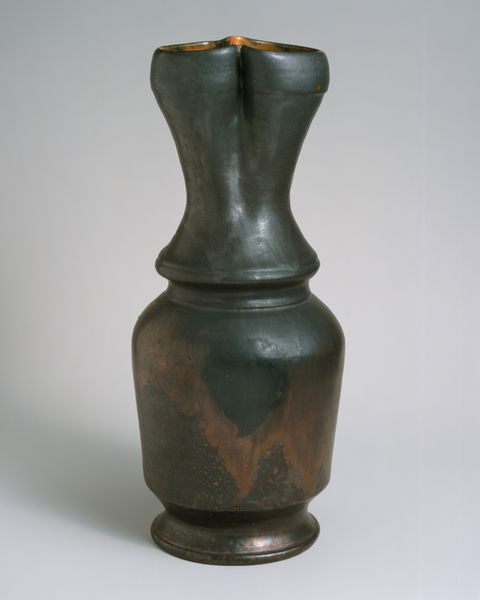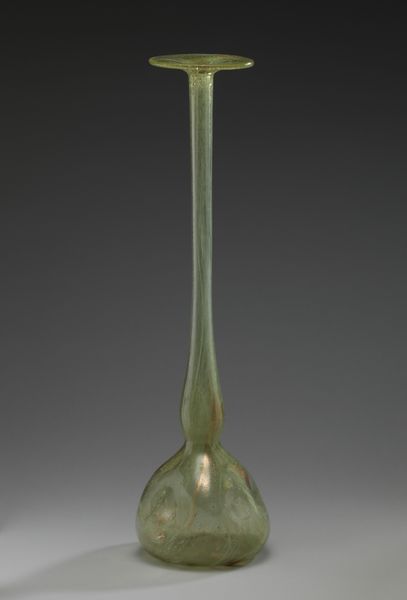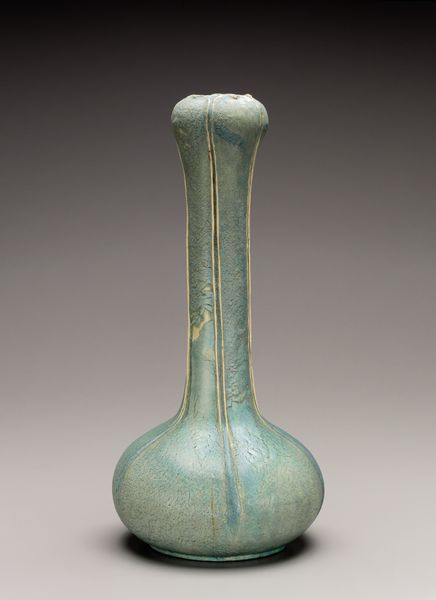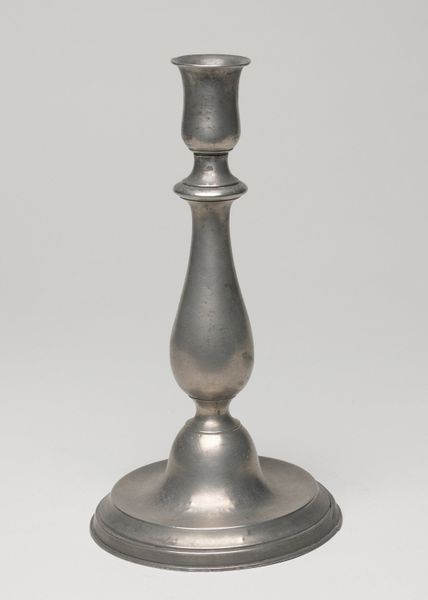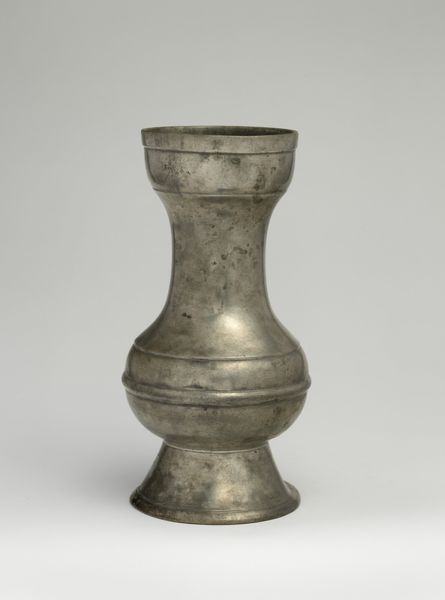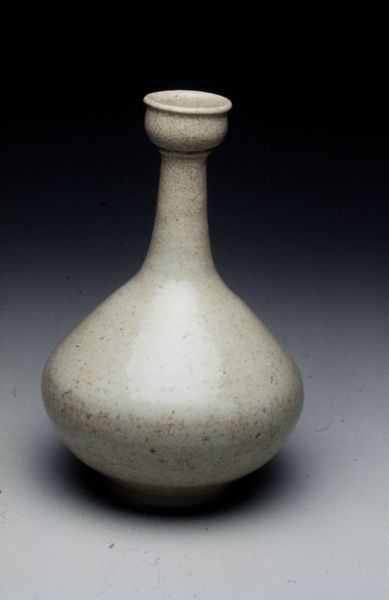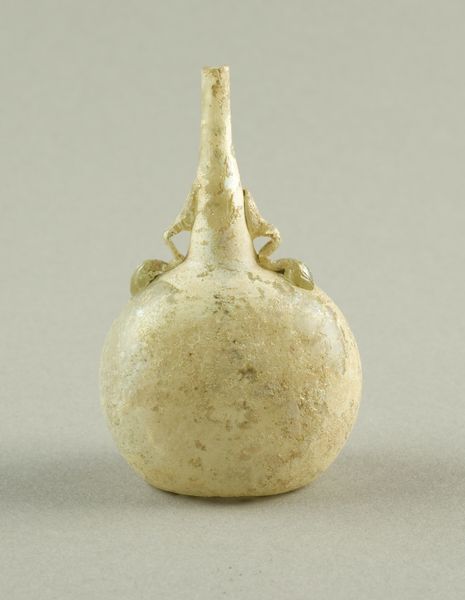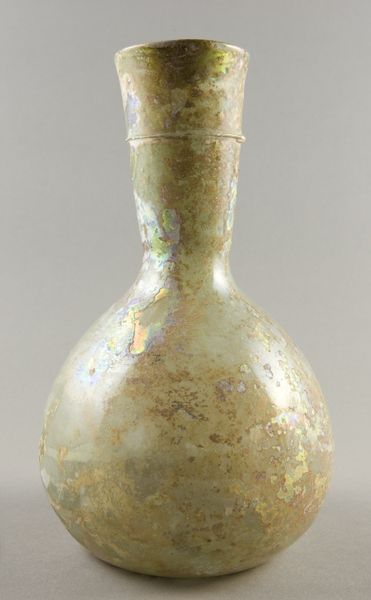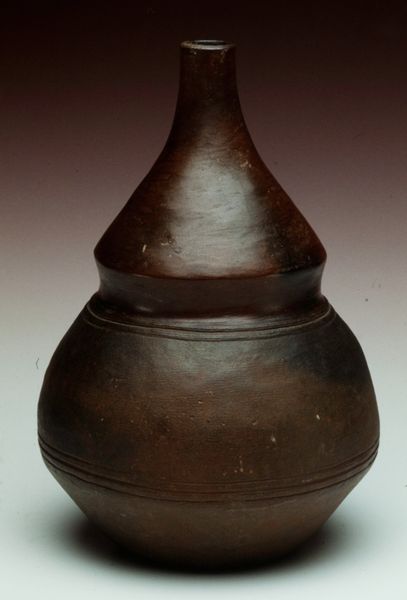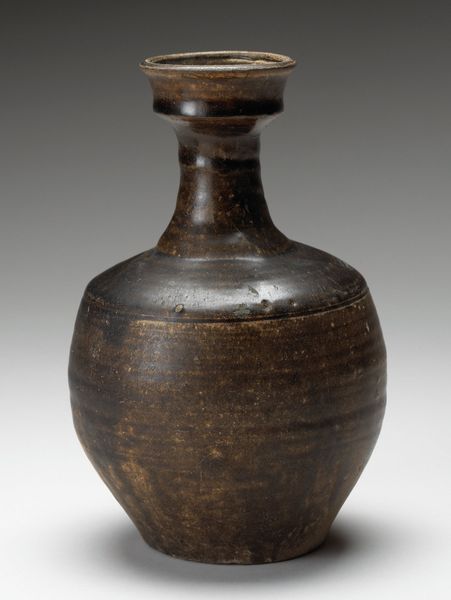
ceramic, earthenware
#
art-nouveau
#
ceramic
#
form
#
earthenware
Dimensions: height 15.5 cm, diameter 7.7 cm
Copyright: Rijks Museum: Open Domain
Editor: Here we have "Vase with a Green Glaze" made in 1898 by De Porceleijne Fles, fashioned from earthenware and ceramic. It strikes me as being very simple and elegant, almost like a stylized flower. What historical contexts informed the piece, and how did these contribute to the vase's shape? Curator: It is lovely, isn’t it? Considering the late 19th century context, with the rise of industrialization and mass production, the vase's design and execution becomes very interesting. Art Nouveau emerged, partly, as a reaction to industrialized aesthetics. Do you see any Art Nouveau features reflected here? Editor: The emphasis on organic form perhaps? That bulging base feels almost plant-like. Curator: Exactly. Artists looked to nature, rejecting what they saw as the coldness of industrial design. Now, given this was produced by De Porceleijne Fles, we also must consider the importance of Dutch ceramics within broader socio-economic factors such as craft revivals of the era. The display of this vase says a lot about that craft revival! Does its smooth, seemingly imperfect glaze say anything about values placed upon artistic practice? Editor: It's subtle but present. It seems like this vase encapsulates a moment of cultural and artistic push-and-pull, embracing modernity while looking back to nature and craft tradition. It now feels far more profound than simply elegant. Curator: Indeed! It’s an object that holds multiple narratives. I'll certainly see Dutch earthenware in a new light from now on.
Comments
No comments
Be the first to comment and join the conversation on the ultimate creative platform.
